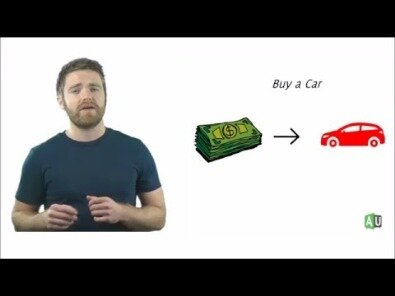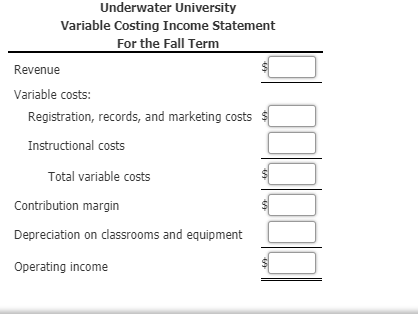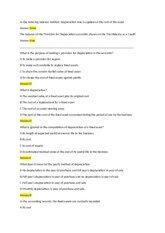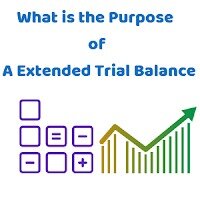Content

In determining the net income from an activity, the receipts from the activity must be reduced by appropriate costs. One such cost is the cost of assets used but not immediately consumed in the activity.
The sum of the digits can be determined by using the formula (n2+n)/2, where n is equal to the useful life of the asset. The double-declining balance is a type of accelerated depreciation method that calculates a higher depreciation charge in the first year of an asset’s life and gradually decreases depreciation expense in subsequent years. There are various methods that can calculate depreciation expense for the period; the method used should reflect the asset’s business use.
Controlling And Reporting Of Real Assets: Property, Plant, Equipment, And Natural Resources
Depreciation is an accounting process by which a company allocates an asset’s cost throughout its useful life. In other words, it records how the value of an asset declines over time. Each time a company prepares its financial statements, it records a depreciation expense to allocate a portion of the cost of the buildings, machines or equipment it has purchased to the current fiscal year. The purpose of recording depreciation as an expense is to spread the initial price of the asset over its useful life.
Expensing these items when purchased would create distorted net income. Therefore, accounting principles prefer that these items be recorded as assets with a corresponding expense recorded when the company uses each item. A transport company with old trucks may not be worth as much as a transport company with new trucks, for example.

For instance, an asset expected to last five years would depreciate by one-fifth of its ticket price each year. An asset’s value can be adjusted to zero at any time if it’s lost, stolen or damaged. If an asset doesn’t lose value – such as land – then it can’t be depreciated. That is dealt with separately, under the field ofinventory accounting. Because depreciation lowers your profit, it can also lower your tax bill.
Why Is Depreciation On The Income Statement Different From The Depreciation On The Balance Sheet?
Harold Averkamp has worked as a university accounting instructor, accountant, and consultant for more than 25 years. A charge for such impairment is referred to in Germany as depreciation. Cam Merritt is a writer and editor specializing in business, personal finance and home design. He has contributed to USA Today, The Des Moines Register and Better Homes and Gardens”publications. Merritt has a journalism degree from Drake University and is pursuing an MBA from the University of Iowa.

A company is free to adopt the most appropriate depreciation method for its business operations. Depreciation expense can be calculated in a variety of ways; the method chosen should be appropriate to the asset type, the asset’s expected business use, and its estimated useful life. The calculation of depreciation expense follows the matching principle, which requires that revenues earned in an accounting period be matched with related expenses. Depreciation expense reduces the book value of an asset and reduces an accounting period’s earnings. Consider a business that acquires an expensive piece of equipment, say a book publisher obtaining a printing press.
Composite Depreciation Method
So the cost of replacement due to this cause is the value of depreciation due to wear and tear. For example, if you were to buy some equipment for $20,000, you have one of two choices. You can either write of the cost of the asset that year, or you can write off its value over an expected lifetime of 10 years. If the expected salvage cost is 2,000, your expected depreciation cost would be $1,800 each year.
- Once you own the van and show it as an asset on your balance sheet, you’ll need to record the loss in value of the vehicle each year.
- This approximation threatens our credulity even more when a company uses accelerated depreciation, since the main reason for using it is to defer the payment of taxes .
- To maximize this benefit, companies will often use an accelerated depreciation method.
- In determining the net income from an activity, the receipts from the activity must be reduced by appropriate costs.
- For example, a depreciation expense of 100 per year for five years may be recognized for an asset costing 500.
If you don’t account for depreciation, you’ll end up paying too much tax. Scrap value is the worth of a physical asset’s individual components when the asset is deemed no longer usable. Salvage value is the estimated book value of an asset after depreciation. It is an important component in the calculation of a depreciation schedule.
This approximation threatens our credulity even more when a company uses accelerated depreciation, since the main reason for using it is to defer the payment of taxes . Also, the matching principle does not work in those cases where depreciation expense is recognized but there are no sales, as occurs in seasonal sales situations. Depreciating assets using the straight-line method is typically the most basic way to record depreciation.
The values of the fixed assets stated on the balance sheet will decline, even if the business has not invested in or disposed of any assets. Otherwise, depreciation expense is charged against accumulated depreciation. Showing accumulated depreciation separately on the balance sheet has the effect of preserving the historical cost of assets on the balance sheet.
If there have been no investments or dispositions in fixed assets for the year, then the values of the assets will be the same on the balance sheet for the current and prior year (P/Y). The depreciation method chosen should be appropriate to the asset type, its expected business use, its estimated useful life, and the asset’s residual value. The amount reduces both the asset’s value and the accounting period’s income.

ccumulated depreciation on the balance sheet serves an important role in capturing the current financial state of a business. It represents the reduction of the original acquisition value of an asset as that asset loses value over time due to wear, tear, obsolescence, or any other factor. In the light of above discussion some money must be set aside yearly from the profits, so that when equipment goes uneconomical, it can be replaced by the new machines. Therefore, we want a system of accounting in which we distribute the initial cost of the equipment machines or assets plus installation charges less the salvage value over the estimated useful life of the assets. The depreciation reported on the income statement is the amount of depreciation expense that is appropriate for the period of time indicated in the heading of the income statement.
Depreciation And Tax
In addition, this gain above the depreciated value would be recognized as ordinary income by the tax office. If the sales price is ever less than the book value, the resulting capital loss is tax-deductible. If the sale price were ever more than the original book value, then the gain above the original book value is recognized as a capital gain. This article is about the concept in accounting and finance involving fixed capital goods. For economic depreciation, see Depreciation and Fixed capital § Economic depreciation.
Depreciation is thus the decrease in the value of assets and the method used to reallocate, or “write down” the cost of a tangible asset over its useful life span. Businesses depreciate long-term assets for both accounting and tax purposes. The decrease in value of the asset affects the balance sheet of a business or entity, and the method of depreciating the asset, accounting-wise, affects the net income, and thus the income statement that they report. Generally, the cost is allocated as depreciation expense among the periods in which the asset is expected to be used. Accumulated depreciation is known as a contra account, because it separately shows a negative amount that is directly associated with an accumulated depreciation account on the balance sheet. Depreciation expense is usually charged against the relevant asset directly.
You’ve heard that the car depreciates as soon as it’s driven off the lot; this is how it works. When you sell it a few years later, you find that you can only get $12,000 for it. When the time came to remove the van from your balance sheet, your assumptions about depreciation turned out to be different from economic reality.
For the decrease in value of a currency, see Currency depreciation. Under straight-line depreciation, you show no expense at the start, then $3,000 a year for 10 years. In each case, your overall profits decline by $30,000; it’s just a matter of timing. In both cases, you have a $30,000 outflow of cash at the beginning and no outflow afterward. Obsolescence should be considered when determining an asset’s useful life and will affect the calculation of depreciation. For example, a machine capable of producing units for 20 years may be obsolete in six years; therefore, the asset’s useful life is six years.
You can look at the numbers involved to see that the company should buy this press. However, accountants often need to distill information far more complex than this into statements that give us a snapshot of the company’s financial health. If a company does not use depreciation, the acquisition of the press will result in a loss of $800,000 in the first year.
When an asset is sold, debit cash for the amount received and credit the asset account for its original cost. Under the composite method, no gain or loss is recognized on the sale of an asset. Theoretically, this makes sense because the gains and losses from assets sold before and after the composite life will average themselves out. Since double-declining-balance depreciation does not always depreciate an asset fully by its end of life, some methods also compute a straight-line depreciation each year, and apply the greater of the two.

